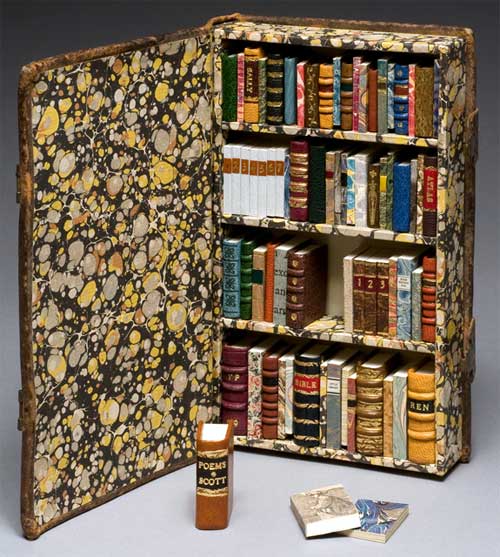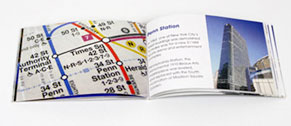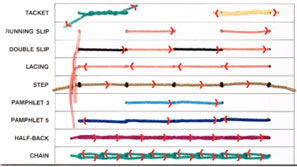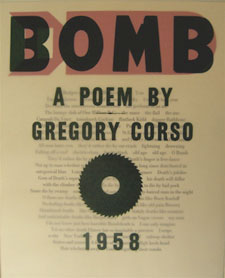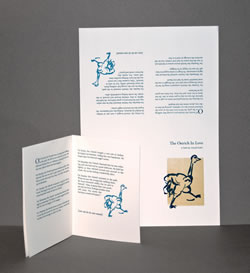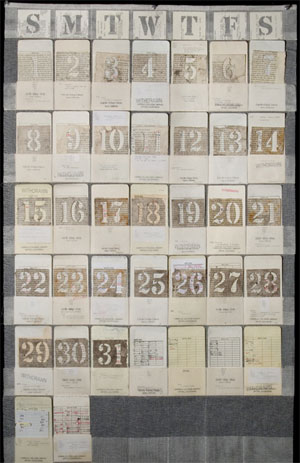“Marking Time” is the theme of the current triennial Guild of Book Workers members’ exhibition. The PCBA had a member exhibition with the same title in 2005 — our theme was a bit more restrictive with the exhibition exploring “how book artists have used the calendar structure to think about the cycles of the year…” We also published an Ampersand at the same time with a more expanded focus, including articles about book artists who used dreams and time in their bookworks.
![]() I’ve been thinking this week about my design for a 2010 calendar (and how much should it be like a conventional month-by-month affair) and “marking time” has been on my mind. So it was with special interest that I looked at the online version of the GBW show. All are beautifully photographed and there is a short artist’s statement accompanying the photos. One that made me smile is Todd Pattison’s Little Library. How does it relate to the theme you might ask? Pattison says, “working on this piece allowed me to bind the same number of books in one night that would otherwise take a year or more.”
I’ve been thinking this week about my design for a 2010 calendar (and how much should it be like a conventional month-by-month affair) and “marking time” has been on my mind. So it was with special interest that I looked at the online version of the GBW show. All are beautifully photographed and there is a short artist’s statement accompanying the photos. One that made me smile is Todd Pattison’s Little Library. How does it relate to the theme you might ask? Pattison says, “working on this piece allowed me to bind the same number of books in one night that would otherwise take a year or more.”

